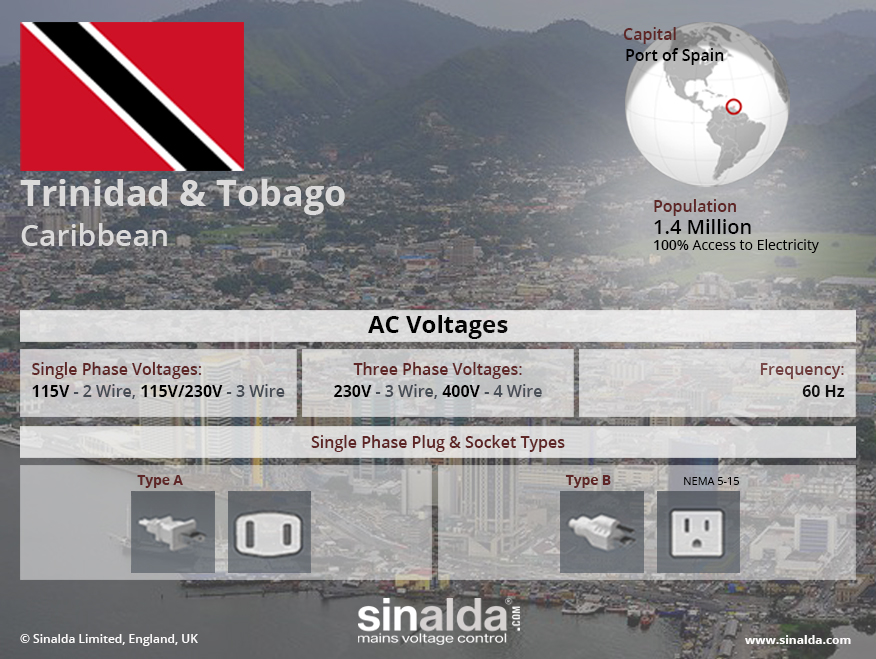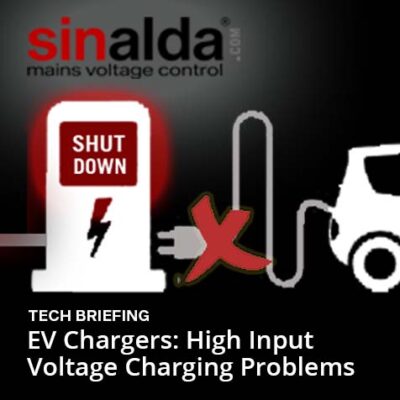Last Updated: 01 November 2021

Copyright 2021 Sinalda. Permission to use this image is granted subject to appropriate credit being given to www.sinalda.com as the source.
Power Quality in Trinidad and Tabago
Trinidad and Tobago, located in the southern Caribbean, is a small twin-island nation known for its vibrant culture, beautiful beaches, and diverse economy. The country is also known for its energy resources, particularly natural gas, which has driven economic growth and development over the past few decades. However, despite this abundance of energy resources, the state of the power supply in Trinidad and Tobago has been a longstanding issue for the country.
Power Sector in Trinidad and Tabago
The power supply in Trinidad and Tobago is primarily generated by the Trinidad and Tobago Electricity Commission (T&TEC), a state-owned utility that is responsible for the transmission and distribution of electricity throughout the country. T&TEC operates a number of power plants, including natural gas-fired plants, hydroelectric plants, and diesel generators, to provide electricity to the country’s residents and businesses.
One of the main challenges facing the power supply in Trinidad and Tobago is reliability. The country has experienced frequent power outages, particularly during peak demand periods, which can have significant economic and social impacts. For example, power outages can disrupt business operations, affect public transportation, and impact the provision of essential services such as healthcare.
Another issue facing the power supply in Trinidad and Tobago is the high cost of electricity. According to the International Energy Agency, Trinidad and Tobago has one of the highest electricity prices in the Caribbean region. This can be attributed to a number of factors, including the high cost of imported fuel, the need to maintain aging infrastructure, and the limited use of renewable energy sources.
To address these challenges, the Trinidad and Tobago government has taken a number of steps to improve the power supply in the country. For example, the government has introduced energy efficiency measures to reduce electricity consumption, encouraged the use of renewable energy sources such as solar and wind power, and invested in upgrading and modernizing the power grid infrastructure.
In addition, the government has sought to increase private sector participation in the electricity sector. This includes the introduction of a feed-in tariff system to encourage investment in renewable energy projects and the privatization of some aspects of T&TEC’s operations.
Despite these efforts, however, the state of the power supply in Trinidad and Tobago remains a significant challenge. The country’s reliance on imported fuel, coupled with an aging infrastructure and limited investment in renewable energy, has made it difficult to achieve a reliable and affordable power supply.
Overall, the power supply in Trinidad and Tobago is a complex issue that requires a coordinated effort from the government, the private sector, and other stakeholders to address. While there have been some positive developments in recent years, more needs to be done to ensure a sustainable and reliable power supply for the country’s residents and businesses.
Share your Views and Experiences
Every reasonable effort is made to ensure that the information provided above is accurate. No guarantees for the accuracy of the information is made.
So we are able to keep the content updated, and actual on the ground experiences can be shared with others, please feel free to contact us.







